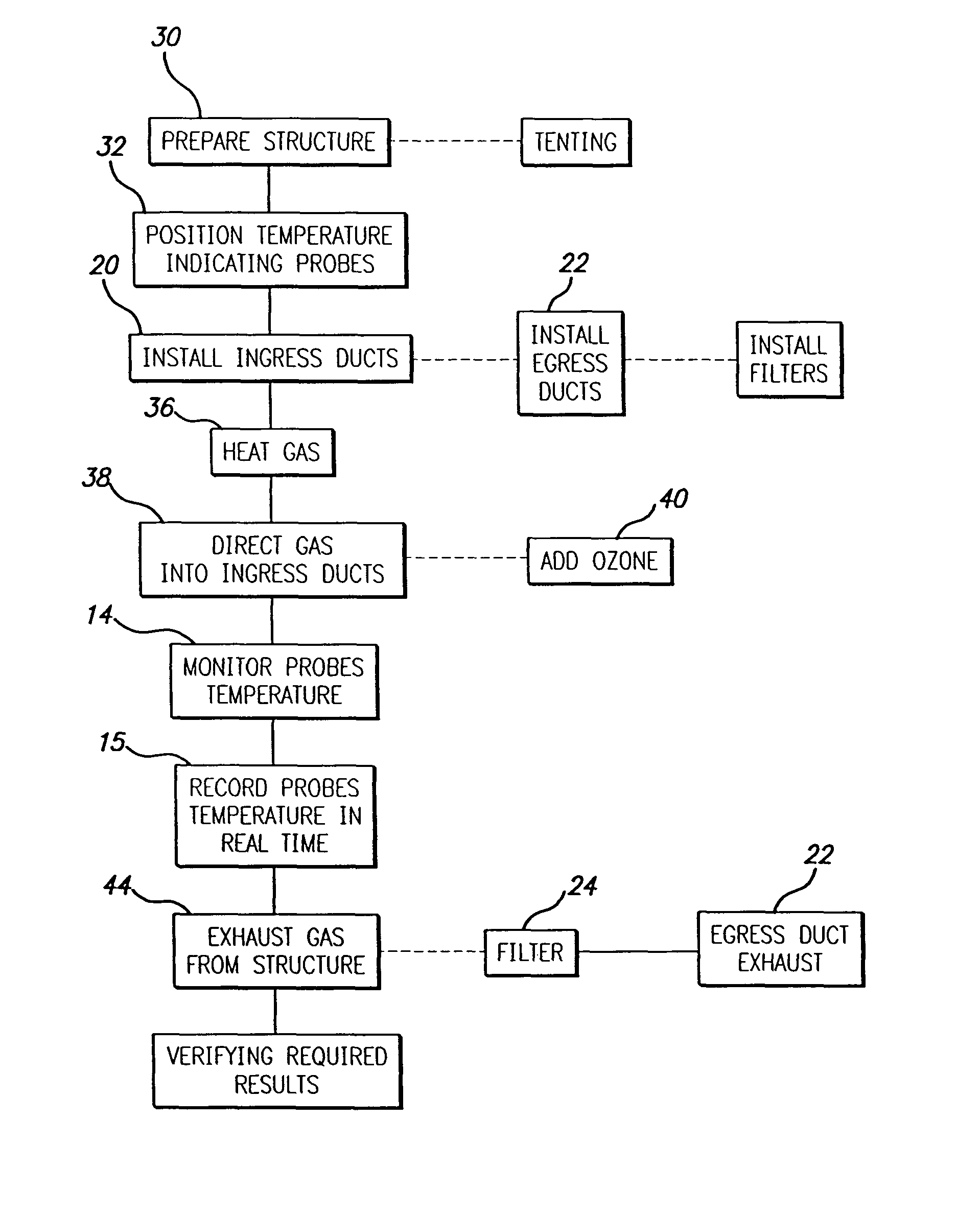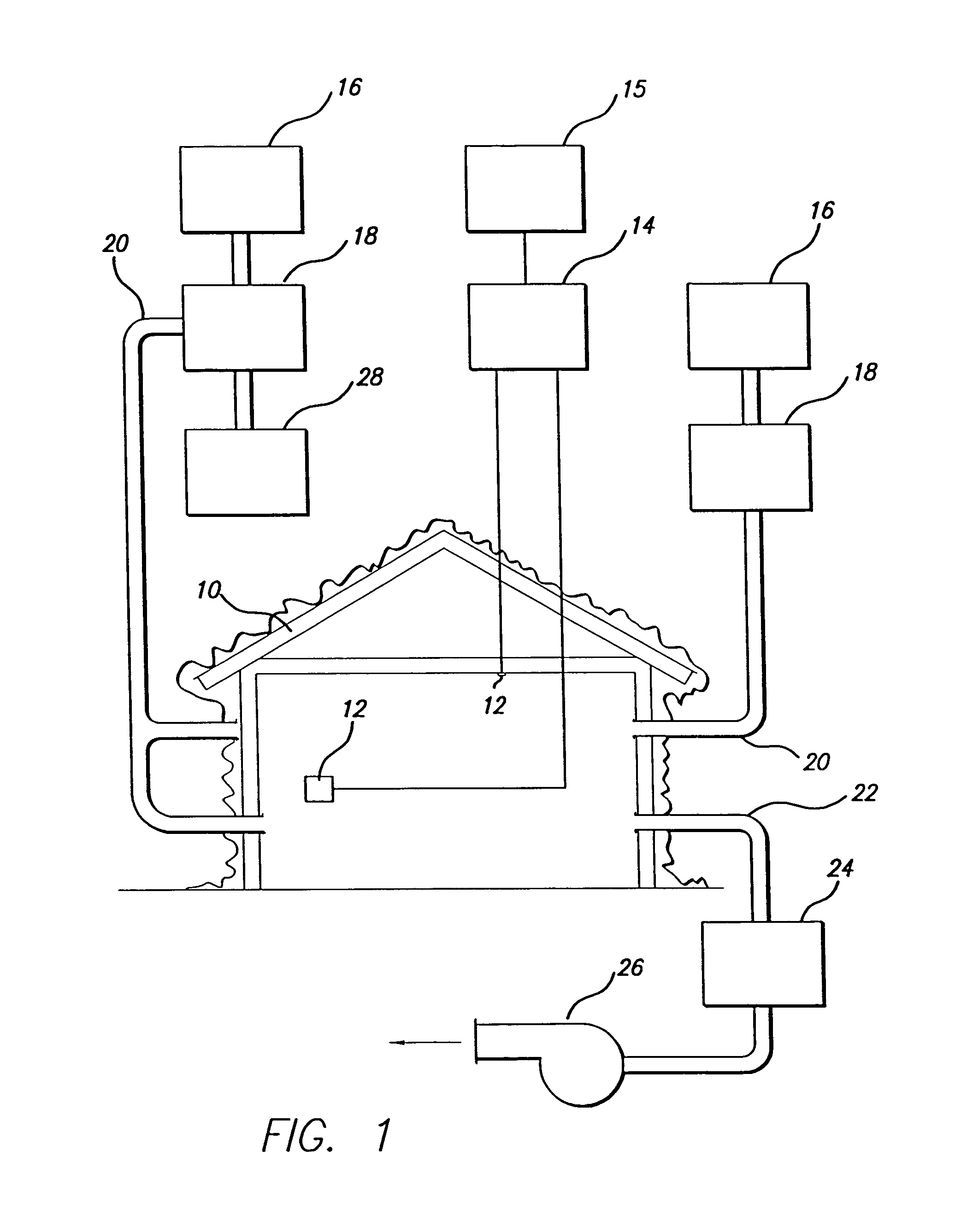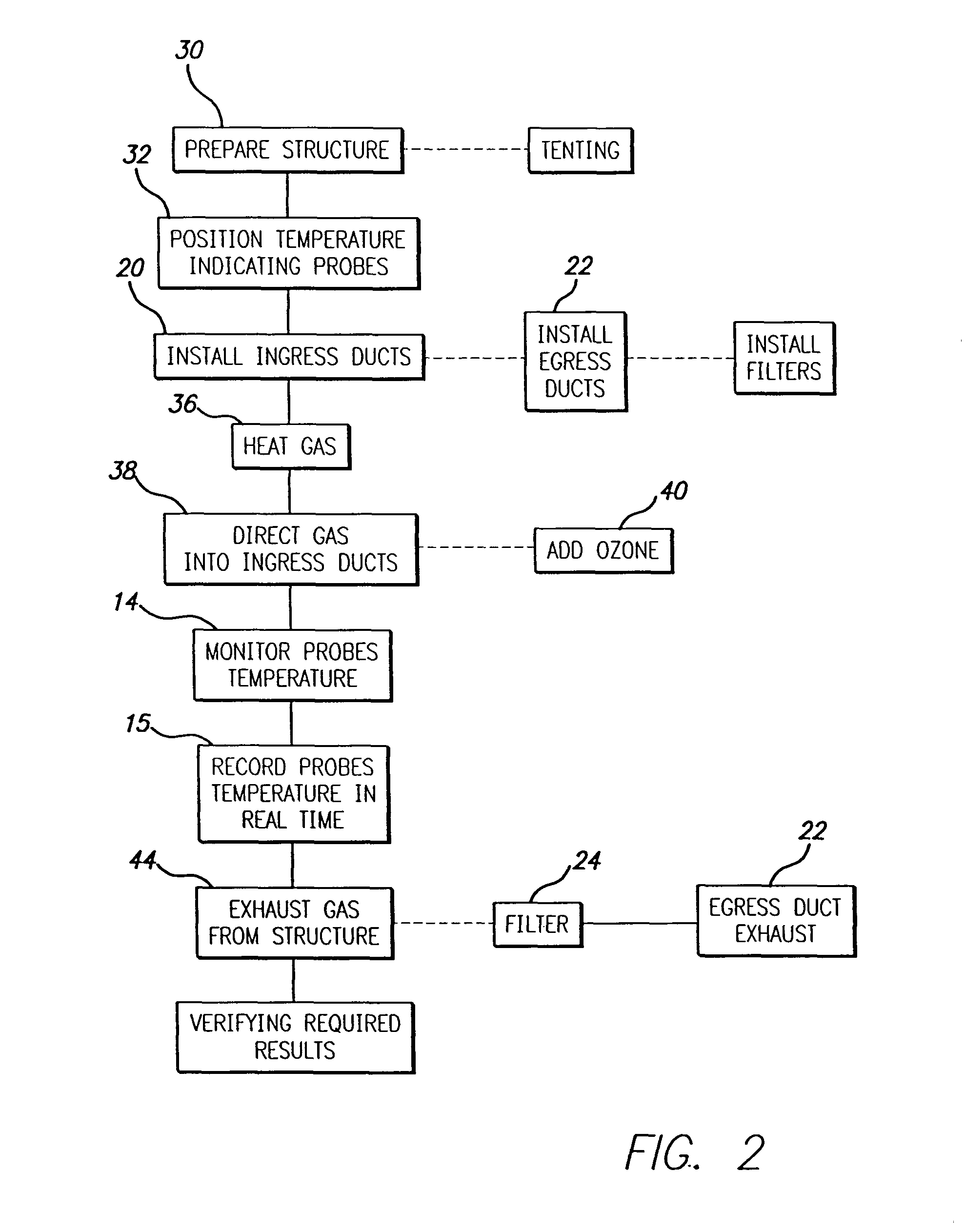Method of killing organisms and removal of toxins in enclosures
a technology of organisms and enclosures, applied in the field of killing organisms and removing toxins in enclosures, can solve the problems of destroying shingles or other roofing materials, requiring 12 hours to be effective, and not being effective for other organisms, such as fungi
- Summary
- Abstract
- Description
- Claims
- Application Information
AI Technical Summary
Benefits of technology
Problems solved by technology
Method used
Image
Examples
Embodiment Construction
[0018]Referring to FIG. 1, there is seen a schematic diagram showing the components of the kit of this invention in use treating an enclosure 10. Typically, enclosure 10 may be a house, barn, shed, a business building or some portion of such a building. An enclosure 11, such as, but not limited to conventional tenting may be required to treat the exterior surface of enclosure 10.
[0019]A plurality of temperature sensors 12 are positioned at predetermined locations to monitor temperature of the structure. Typically, these sensors have thin, elongated, tips that can be adhered to or pushed into wood or other materials or into suitable sized holes drilled into such material so as to measure the surface and / or internal temperature. Sensors 12 may be wired to a console 14 which displays and records the temperature at each sensor in real time for future reference. Alternatively, the sensors may be wireless or infrared, transmitting a signal to console 14. Typical sensors, as for way of exa...
PUM
 Login to View More
Login to View More Abstract
Description
Claims
Application Information
 Login to View More
Login to View More - R&D
- Intellectual Property
- Life Sciences
- Materials
- Tech Scout
- Unparalleled Data Quality
- Higher Quality Content
- 60% Fewer Hallucinations
Browse by: Latest US Patents, China's latest patents, Technical Efficacy Thesaurus, Application Domain, Technology Topic, Popular Technical Reports.
© 2025 PatSnap. All rights reserved.Legal|Privacy policy|Modern Slavery Act Transparency Statement|Sitemap|About US| Contact US: help@patsnap.com



